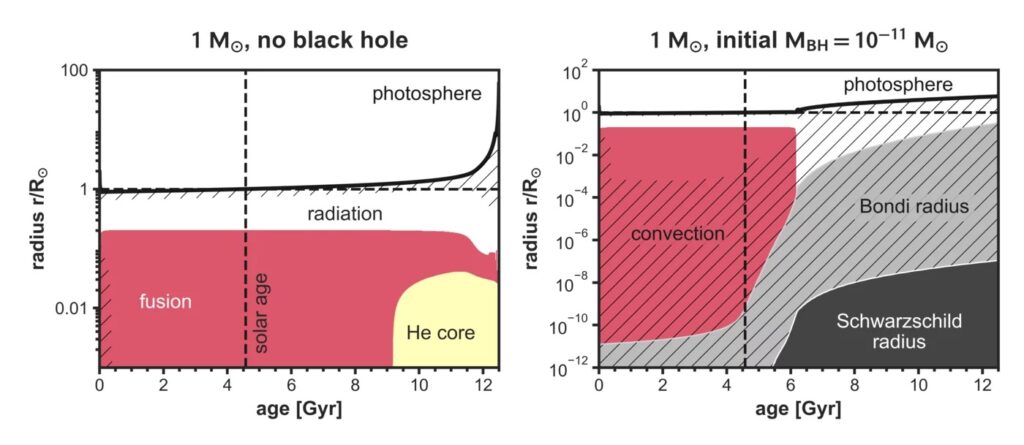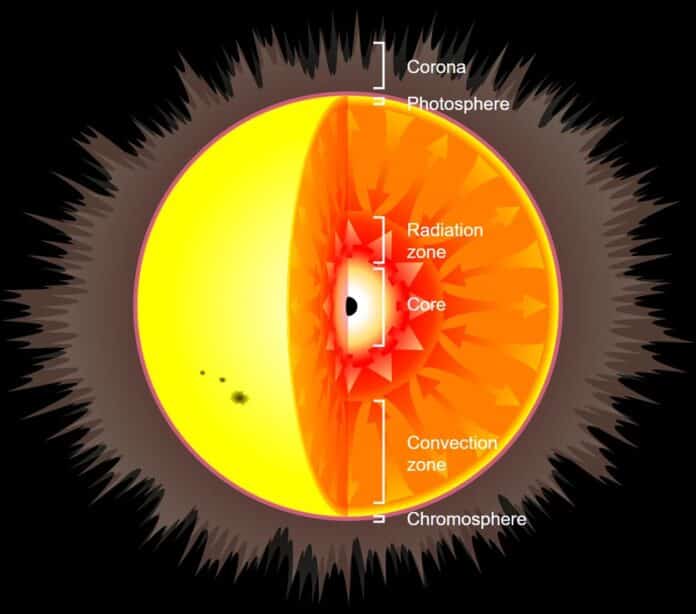Astrophysical Chaos: What happens if you put a black hole into the Sun?
Long ago, there were tiny black holes called primordial black holes in the early Universe. They came in various sizes, from as small as an asteroid to as big as thousands of suns. These black holes might be part of what we call dark matter and could even be the starting point for the enormous black holes in the middle of galaxies today.
Sometimes, a new star could accidentally trap a small black hole, like one the size of an asteroid or a small moon. This particular star is called a “Hawking star,” named after Stephen Hawking, who thought of this idea in the 1970s. The black hole inside a Hawking star doesn’t grow very fast because it’s hard to get more gas to eat, thanks to the bright light pushing things away.
Scientists from around the world, led by researchers at the Max Planck Institute for Astrophysics, have studied how these special “Hawking stars” change over time. Surprisingly, they found that these stars can live remarkably long, behaving like regular stars in many ways.
The model reveals the evolution of such a star with various initial masses for the black hole and different accretions models for the stellar center. Their astonishing result: when the black hole mass is small, the star is essentially indistinguishable from an average star.
Earl Patrick Bellinger, MPA Postdoc and now Assistant Professor at Yale University, said, “Stars harboring a black hole at their center can live surprisingly long. Our Sun could even have a black hole as massive as the planet Mercury at its center without us noticing.”
If we compare a Hawking star to a regular star, the main difference would be near the center, where it becomes turbulent due to the black hole pulling in material. This turbulence would stay the same as how the star looks on the outside, making it hard to detect using current methods.

However, a technique called asteroseismology, which studies sound waves inside a star, might help find these stars. As these stars age into red giants, the black hole might cause unique signs. Future projects like PLATO could discover these objects. Still, more computer simulations are needed to understand what happens when you put a black hole into stars of different sizes and compositions.
Professor Matt Caplan at Illinois State University, co-author of the study, said, “If primordial black holes were indeed formed soon after the Big Bang, looking for Hawking stars could be one way to find them. “Even though the Sun is used as an exercise, there are good reasons to think Hawking stars would be common in globular clusters and ultra-faint dwarf galaxies.”
“This means that Hawking stars could be a tool for testing the existence of primordial black holes and their possible role as dark matter.”
